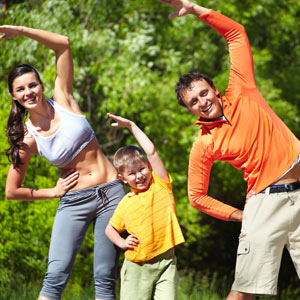Physical activity

Physical activity is understood as an essential amount of exercise necessary for our development and good health.
Wellness physical activity is one of the main elements of a healthy lifestyle and plays a vital role in the promotion of health. The lack of it may be the reason of poor health and many diseases. Regular physical activity helps us to achieve good physical condition, which allows our organism to work both effectively and efficiently. It is closely connected with good state of health, pleasure from active leisure, resistance to hypokinetic diseases.
Good physical fitness enhances our mood and improves the quality of life. However, it is impossible to achieve good physical fitness without physical exercise. In order to improve our health state and physical fitness, we need to accustom our body to regular physical effort, not just in a gym, at a swimming pool, or on a bicycle. If we spend most of our time in a sitting position, physical exercise alone will not eliminate the risk of chronic diseases. Only the combination of all elements of wellness activity prevents from the risk of hypokinetic diseases.
What characterises wellness physical activity?
Wellness physical activity should put us in a good mood and extend healthy life. Practising this kind of activity is not supposed to cause stress (e.g. due to competition), injuries (e.g. some exercises, strenuous sport), or lead to bad health or even death (e.g. competing in long-distance races). The selection of elements of wellness physical activity takes into account all of these factors. In this way, it combines physical activity of everyday life, light exercises, active leisure, sport without competition and risk of injuries.
Physical wellness activity involves:
- everyday physical activity related to lifestyle: going to work, shopping, stair climbing, walking or marching during the day, e.g. wellness walking (we should walk min. 7500 steps a day altogether);
- everyday light exercises, e.g. morning gymnastics and stretching during the day, exercises connected with preventive treatment (back pains and ailments);
- active leisure: active hobby, e.g. gardening, ballroom dancing;
- more intensive activities: Nordic walking or active wellness walking, endurance march walk/run, jogging;
- sport without competition and risk of injuries, e.g. swimming, cycling;
- gym classes 2-3 times a week, alternatively fitness or Pilates; flexibility exercises, i.e. stretching after each training (especially for those who really take care of their appearance);
- reducing time of physical inactivity, especially in front of a TV set; spending this time on full regeneration of our organism.
